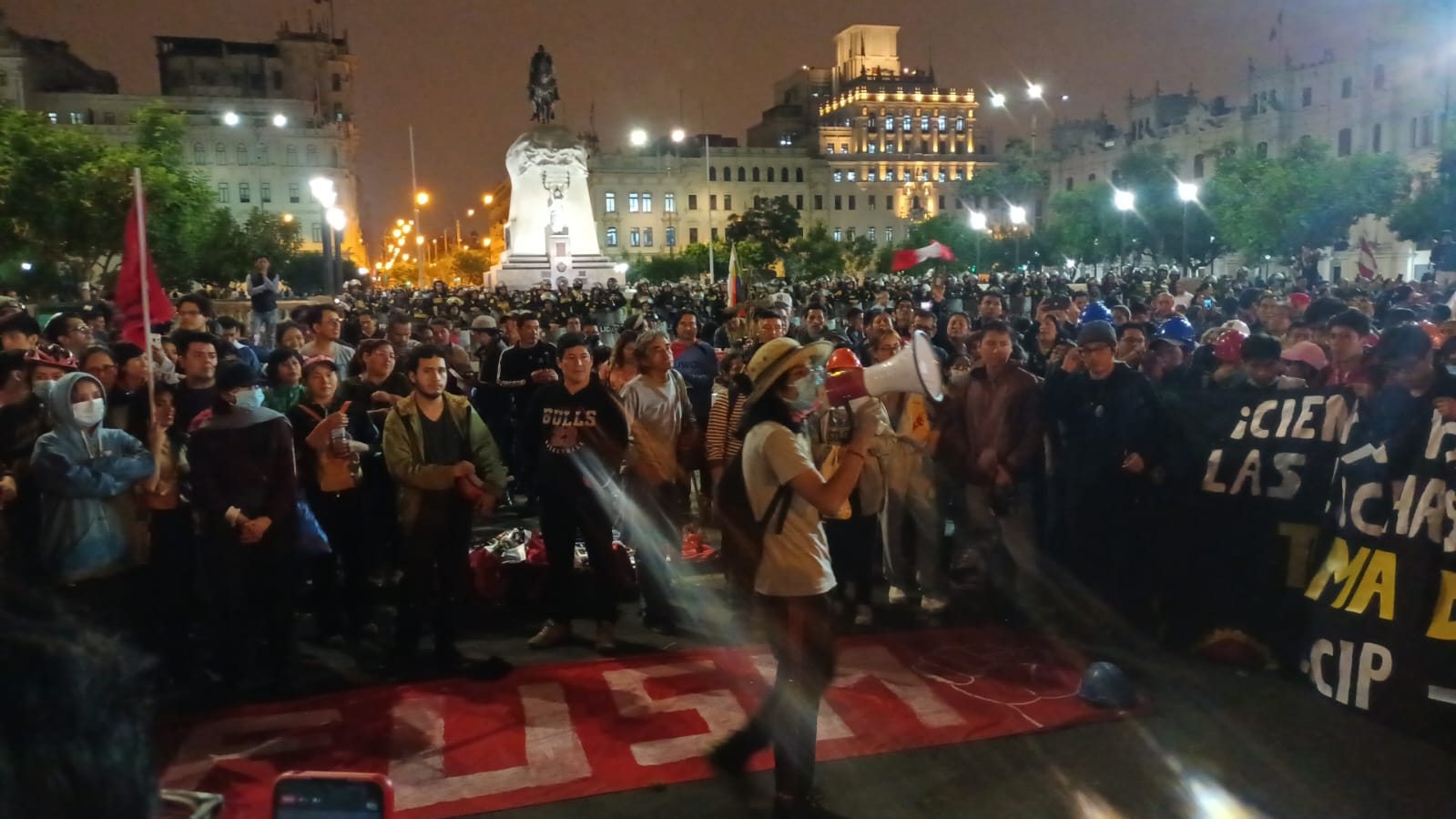 Dispatches
DispatchesPeruvian law students from the Facultad de Derecho, Universidad Nacional de San Antonio Abad del Cusco are reporting for JURIST on law-related events in and affecting Perú. All of them are from CIED (Centro de Investigación de los Estudiantes de Derecho), a research center in UNSAAC’s faculty of law dedicated to spreading legal information and improving legal culture through study and research, promoting critical and reflective debate to contribute to the development of the country. Jose Daniel Yampi Meche is a law student from UNSAAC and a member of CIED. He files this dispatch from Cusco.
Last week, on July 28th, Peru celebrated its independence day, the anniversary of the day in 1821 when General José de San Martín, proclaimed Peru’s independence from Spain. But a few days before celebrating their independence, Peruvian citizens carried out peaceful marches against the government.
Peruvian society is used to holding large military presentations, parties, meals and dances in order to celebrate Peru’s independence. This year was not business as usual, however, since society has been demanding for a long time that the elections for president of the republic be brought forward, because the President of the current Government, Dina Boluarte, has shown an inability to solve conflicts. Not only that, she has shown no interest in listening to the requests of the citizens.
On July 19, 2023, large groups of protesters traveled from different places in Perus to the capital, Lima, to convey their disapproval of the government of the current president. Those who could not travel marched in the province they were in. People in 59 provinces marched.
In response, the government sent police officers to the highways in order to prevent residents from different parts of Peru from reaching the capital. They were preparing for a confrontation, but what happened was a calm and peaceful march, where the resignation of the current President of the Republic was requested. Even so, reporters and civilians were injured by rubber bullets fired by police officers. In this situation, the Minister of the Interior Vicente Romero Fernández, the man in charge of protecting and guaranteeing the free exercise of fundamental rights and freedoms, insisted that the police no longer use rubber bullets, a fact that is totally false as seen in the photos. and videos of the wounds and of the policemen shooting. This way of proceeding by the government on duty is not new. On a previous occasion, to cover up the death of 49 Peruvians, they said they did not order the use of firearms, but in videos protesters, civilians and a child could be seen dying from of projectiles fired from firearms.
Official news reports did not give adequate space to the protests and sought to minimize the marches. In this context, social networks such as FaceBook , TikTok , WhatsApp, among others, became the most used means of learning about them, since all their information was broadcast live. without interruptions or biased comments by some reporters. Television and radio networks lost credibility in this situation.
The Constitution of Peru allows people to organize in order to claim, demand and send their requests to Congress. Historically, Peru is a country of protests, strikes and marches. Ths is due to the fact that in past years there has been a lot of corruption in the state, evidenced by the fact that most of the former presidents have been sentenced to imprisonment for crimes against public administration. Protests are the means used by Peruvian residents to demand that public officials not just do what they want, as a result of which the right to strike has even more foundation and importance. The strike cannot be violent, however. This was demonstrated in this latest march, but despite this the police did not hesitate to shoot rubber bullets, seeking to intimidate the strikers.
The current president has a 79% disapproval rating. A large part of society does not want her in power, and she has shown an absolute inability to lead a country. Many people even consider that the president is a puppet manipulated by the Fujimori family (the former president of Peru Alberto Fujimori was accused of crimes against humanity and was sentenced to remain in jail for the rest of his life; time later his children Keiko and Kenji Fujimori decided to run for the presidency, Keiko being the one who came to have greater political representation within the congress, through negotiations, and different tricks).
In Peru we have many laws that are not enforced, and nobody does anything about it. Congress does what it wants. There is a lot of corruption in the state, the judiciary is also corrupt, and almost all the “representatives” are only looking for their own benefit, be it political or economic. For these reasons, the law has become a weapon to allow abuses on some occasions. On the other hand, it has also become a strong shield that serves as protection for these bad officials. The clearest description of Peru is that offered by 19th-century Peruvian intellectual and political figure Manuel Gonzales Prada in one sentence: in Peru “where you put your finger, the pus (liquid product of an infection) comes out.”

